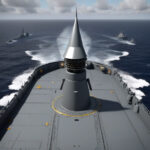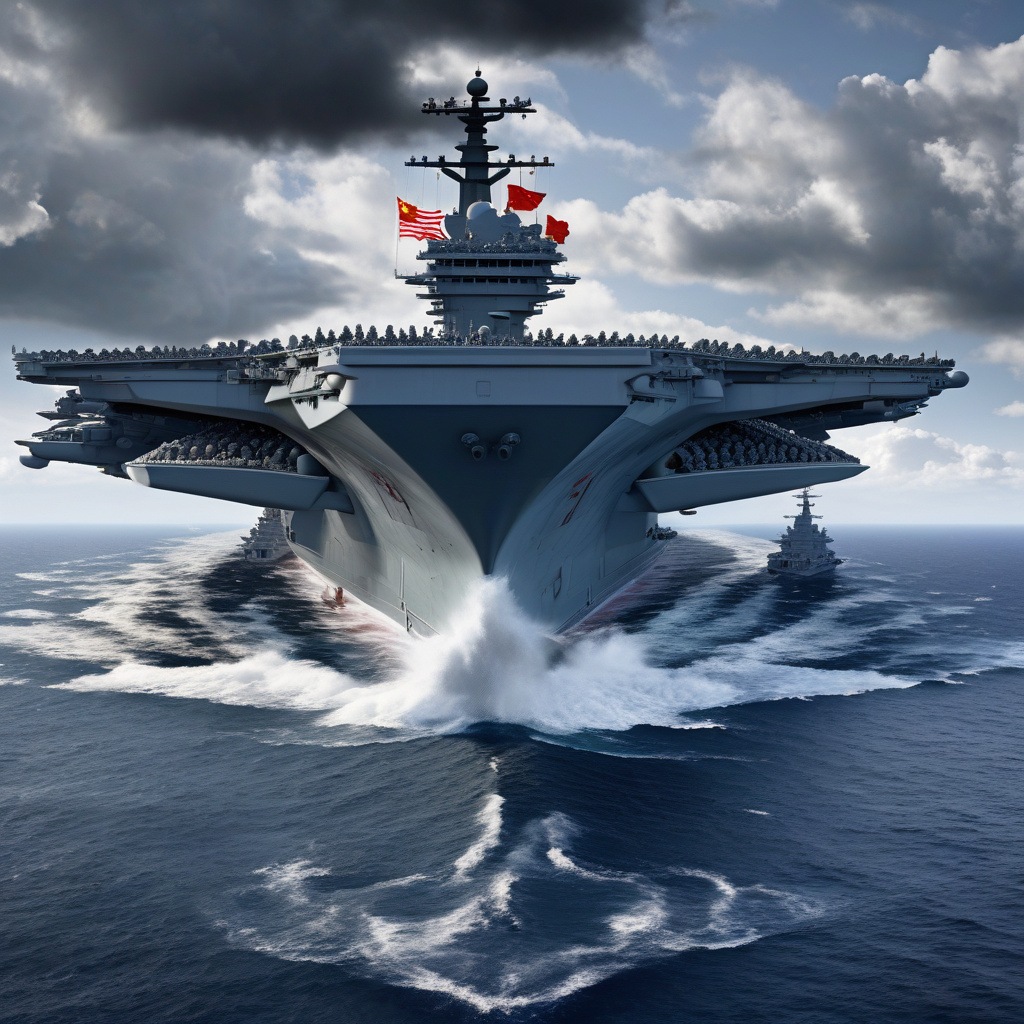China’s 50,000-Ton Aircraft Carrier Testing US with Farthest Sail in Western Pacific
To expand its operational capabilities, China’s People’s Liberation Army (PLA) Navy has sent its aircraft carrier, the Shandong, on a significant journey that is raising eyebrows globally. The 50,000-ton vessel is currently conducting exercises in the Western Pacific, a move that some see as a deliberate testing of the United States’ presence and influence in the region.
The Shandong, China’s first domestically built aircraft carrier, set sail from its base in Qingdao, Shandong province, marking one of its furthest ventures into the Western Pacific since it was commissioned in December 2019. The carrier is accompanied by a fleet of warships and aircraft, showcasing China’s growing naval capabilities and ambitions.
This bold move comes at a time of heightened tensions between China and the US over various issues, including trade, technology, human rights, and most notably, military presence in the Indo-Pacific region. The US has been conducting freedom of navigation operations in the South China Sea, much to China’s displeasure, as Beijing claims sovereignty over the majority of the strategic waterway.
By sending the Shandong on this extended deployment, China is not only flexing its military muscles but also sending a clear message to the US and its allies in the region. The aircraft carrier’s voyage serves as a demonstration of China’s expanding naval reach and its ability to project power far beyond its shores.
The Western Pacific is a crucial area for both China and the US, as it serves as a gateway to the broader Indo-Pacific region. Control over these waters allows for power projection, protection of vital sea lanes, and the ability to influence regional dynamics. With the Shandong’s current mission, China is signaling its intent to become a dominant maritime player in the region, challenging the US Navy’s traditional dominance.
Moreover, the deployment of the Shandong underscores China’s commitment to modernizing its military and developing a blue-water navy capable of operating in distant waters. The PLA Navy has been rapidly expanding its fleet in recent years, investing in advanced warships, submarines, and aircraft to enhance its capabilities and assert its presence in strategic maritime areas.
While China maintains that its military buildup is purely for defensive purposes, the increasing assertiveness of its naval forces has raised concerns among regional neighbors and the US. The presence of the Shandong in the Western Pacific is likely to be closely monitored by US defense officials and could prompt responses to ensure the security and stability of the region.
As China’s aircraft carrier continues its maneuvers in the Western Pacific, the geopolitical implications of its journey are significant. The US, Japan, Australia, and other regional powers are closely watching China’s naval activities and assessing the strategic implications for their own security and interests in the region.
The deployment of the Shandong represents a milestone in China’s naval development and its aspirations for greater influence on the world stage. As the PLA Navy continues to modernize and expand its capabilities, the balance of power in the Indo-Pacific is shifting, with far-reaching implications for regional security and stability.
In conclusion, China’s 50,000-ton aircraft carrier’s testing of the US with its farthest sail in the Western Pacific is a bold move that underscores Beijing’s growing assertiveness and ambition in the maritime domain. The implications of this deployment are significant, signaling a new chapter in great power competition and shaping the future dynamics of the Indo-Pacific region.
China, Aircraft Carrier, US, Western Pacific, Naval Power












